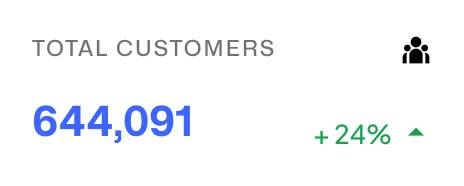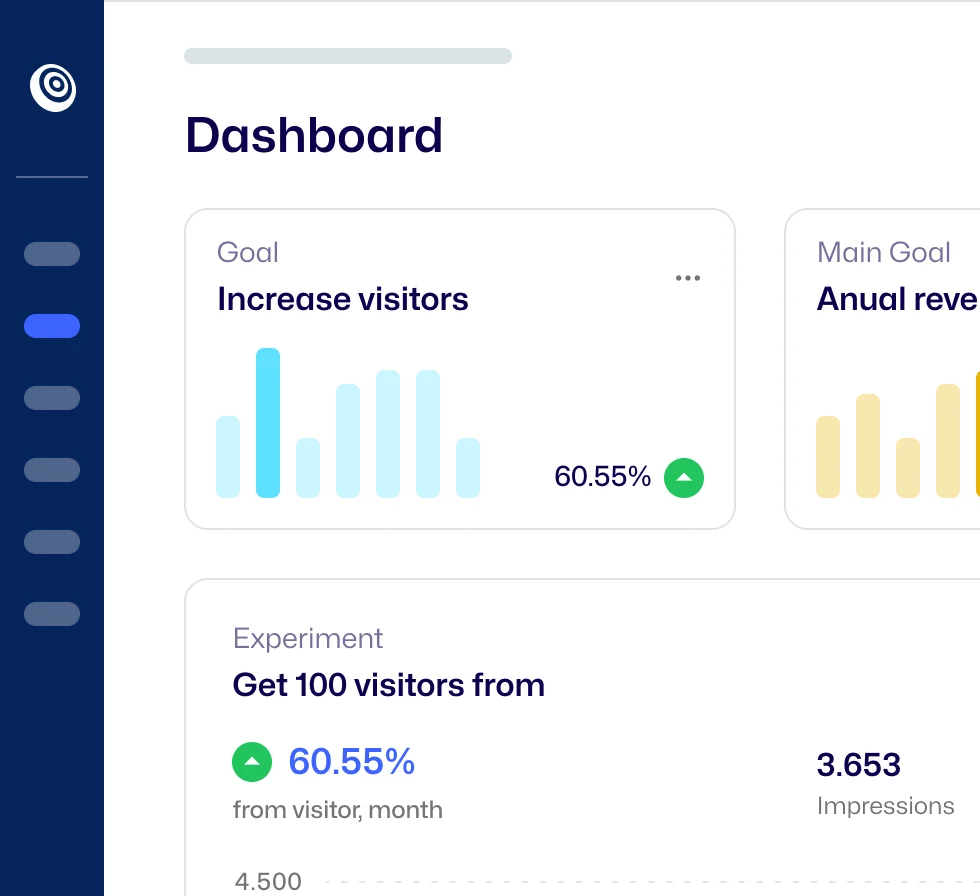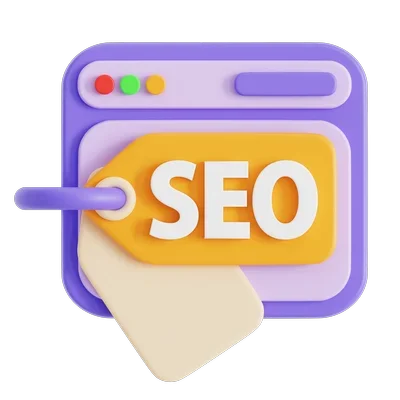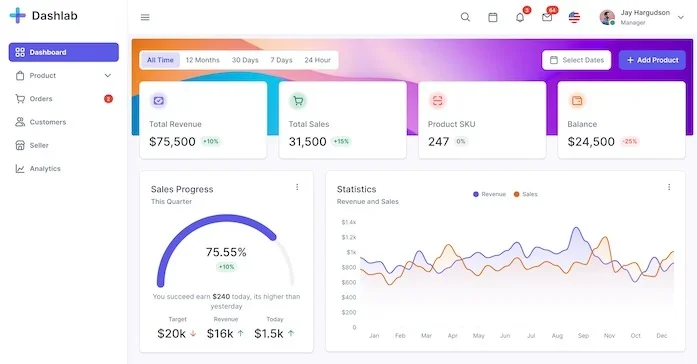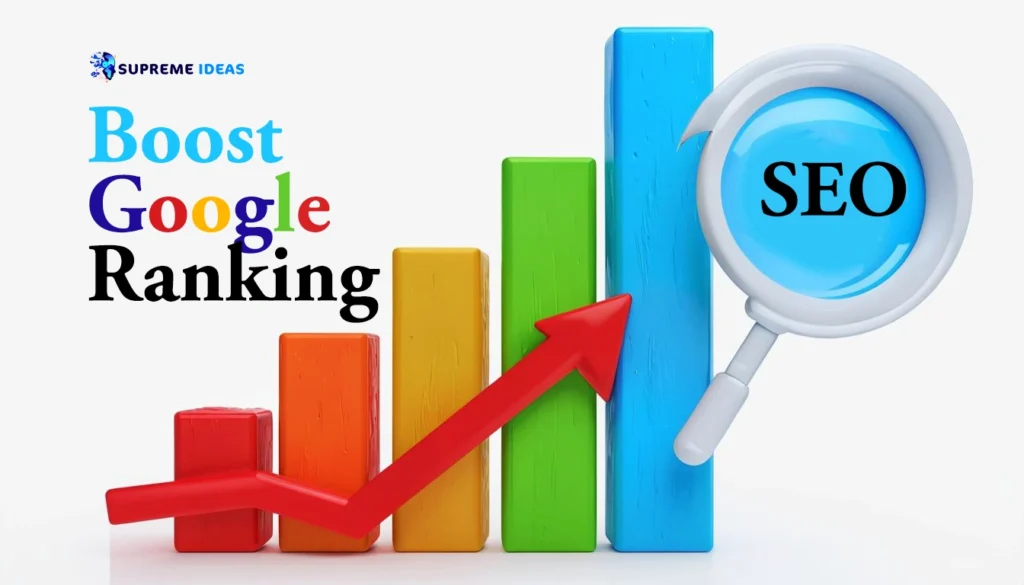
Yo, supreme ideas fam! (a quick reality check)
HTTPS, google ranking factors, google ads best practices, and all the dumb mistakes people make. so, we’re gonna use that intel to give a deep dive. it’s actually probably better, ’cause this is fresh, multi-source stuff, not just one old blog post. the core idea is still the same: how do we get higher on google? and HTTPS is definately a piece of that puzzle, but it’s not the only piece. or even the biggest piece anymore, sometimes. it’s more like table stakes. we’ll get into it.
HTTPS: Still a Big Deal or Just, Like, Whatever?
okay, so, HTTPS. is it still a big deal for google rankings? short answer: yes, but it’s nuanced. it’s not the magic bullet some folks beleive it to be, but it’s also not something you can just ignore, no way.
Google’s Stance: It’s a Signal, Part of the Vibe.
google confirmed way back in 2014 that HTTPS became a ranking signal. 3 that’s old news, but it totally set the stage. more recently, google’s documentation has shifted. they’re not saying HTTPS directly influences rankings on its own, like a standalone “ranking system.” instead, it’s a signal that contributes to the overall “page experience” system. 4 think of it like this: a fast car is great, but if the driver sucks, it doesn’t matter. HTTPS is like a good, safe seatbelt. it’s part of the whole safety system that makes the ride good.
the initial announcement about HTTPS being a “ranking signal” in 2014 led many to think it was a strong, direct positive factor for big ranking boosts. but more recent statements clarify it’s part of a broader “page experience” system, not a standalone “ranking system.” this indicates a shift from a “reward” mechanism to more of a “baseline expectation” or even a “penalty avoidance” mechanism. if everyone has it, it no longer provides a competitive advantage on its own, but its absence becomes a significant disadvantage. so, agencies shouldn’t sell HTTPS as some magic bullet for ranking gains anymore. it’s a fundamental requirement to avoid penalties and ensure user trust, which then indirectly supports ranking by improving user experience factors like bounce rate and dwell time. it’s less about “boosting” and more about “not falling behind.”
john mueller, a google search advocate, basically said, “don’t hyper-focus on just the numbers.” it’s about the holistic page experience. 4 this means if the content is garbage, but a site has HTTPS, it’s still gonna lose. but if the content is amazing, and a site doesn’t have HTTPS, it’s also gonna lose. it’s a foundational element.
Why It Matters Beyond Just Rankings: Trust, Security, UX.
user trust is paramount. when users see that little padlock icon and “https” in the URL, they feel safer. it signals trustworthiness. 5 and if they feel safe, they’re more likely to stick around, engage, and convert. this reduces bounce rates and increases engagement, which does indirectly help SEO. 5
the shift from a direct ranking signal to a “page experience” component aligns with google’s broader goal of providing the best possible user experience. the “not secure” warnings 6 aren’t just technical; they’re psychological. users, especially modern ones, expect security.7 if a site looks insecure, users will bounce.5 high bounce rates and low dwell times 3 are negative user experience signals that do impact rankings. therefore, HTTPS, while not a direct ranking booster on its own, is a critical component of a positive user experience, which is a major ranking factor. this means HTTPS is no longer just an SEO checkbox; it’s a fundamental aspect of user trust and brand credibility. ignoring it is akin to having a broken front door on a store. people just won’t come in, no matter how good the products are. it’s about building a solid foundation for all digital marketing efforts, not just SEO.
actual security. HTTPS encrypts communications between the browser and server. this means data (like passwords, credit card info, personal deets) is protected from interception and tampering. 5 for any site handling sensitive data, this isn’t optional; it’s critical. 4
google’s “not secure” shame game. since 2018, chrome (and other browsers followed) started flagging all HTTP sites as “not secure” in the URL bar. 6 this isn’t just a subtle nudge; it’s a direct warning to users. google’s rationale? users don’t perceive the lack of a “secure” icon as a warning, so they had to make it explicit. 7 basically, they’re punishing sites that don’t have it.
authentication. SSL certificates, which enable HTTPS, also authenticate the website. it proves the server is who it claims to be, preventing impersonation or spoofing attacks. 6 this builds legitimacy for a brand.
Different SSL Certs: Quick Thoughts.
there are a few types: standard validation (DV), organization validated (OV), and extended validation (EV). DV is the cheapest, basic security, just proves domain ownership. OV vets the organization. EV offers the highest trust, with a green bar showing the business name, ideal for e-commerce. 5
from an SEO perspective, the type of SSL certificate picked is pretty much inconsequential. 8 google doesn’t care if a site has a DV or an EV for ranking purposes. the research clearly states that the type of SSL certificate doesn’t directly impact SEO rankings.8 however, it also highlights that EV certificates, for example, provide a “higher level of protection” and “display a green address bar” for e-commerce sites handling sensitive transactions.5 this creates a distinction between what’s sufficient for google’s ranking algorithm and what’s necessary for business operations, user trust, and legal compliance. agencies should advise clients to choose an SSL certificate based on their business needs, the type of data they handle, and the level of trust they need to convey to their specific audience, rather than solely on perceived SEO benefits. for a simple blog, DV is fine. for an e-commerce site, EV might be a smart business decision, even if google doesn’t rank it higher just for that. it’s about risk management and conversion rate optimization, not just SEO.
Here’s a quick rundown of HTTP vs. HTTPS:
Table 1: HTTP vs. HTTPS: The Quick Lowdown
Feature | HTTP | HTTPS |
Encryption | No | Yes 5 |
Data Integrity | No (data can be tampered with) | Yes (data protected in transit) 5 |
Authentication | No (no server identity verification) | Yes (server identity verified) 5 |
Browser Indicator | “Not Secure” warning in Chrome 6 | Padlock icon, “Secure” 5 |
Google’s Stance | Discouraged, potential ranking penalty | Preferred, part of page experience 4 |
Making the Switch to HTTPS: Don’t Screw It Up (Seriously)
okay, so you’re convinced HTTPS is intresting and important. great. now, don’t mess up the migration. this isn’t just flipping a switch; it’s a site migration, and those can wreck SEO if not careful. 9
The Risks of a Bad Migration (Ranking Drops, Broken Links, All That Fun Stuff).
any significant change to a website that affects visibility is a site migration, even HTTP to HTTPS. 9 if mishandled, a site is looking at ranking drops, duplicate content issues, missing metadata, crawling errors, and broken links. 10 no one wants that. it’s like moving house. if the post office isn’t told the new address, mail (traffic) goes everywhere. a single error during migration, like not setting up 301 redirects properly 9, doesn’t just result in a broken link. it leads to a chain reaction: users hit 404s, bounce rates spike, google sees a poor user experience, authority isn’t passed 9, indexing gets messed up, and ultimately, rankings plummet.10 the initial “mistake” is a trigger for a cascade of negative SEO signals. this means emphasizing that migration isn’t just a technical task; it’s an SEO-critical operation. every step needs to be meticulously planned and executed because a small oversight can have disproportionately large, negative ripple effects on organic performance. it requires a dedicated SEO professional involved from day one.
Pre-Migration Prep: Audits, Checklists, URL Mapping, 301s (Critical, Don’t Use 302s, That’s a Dumb Idea).
thorough audit. before doing anything, audit the existing site. know traffic sources, which pages bring in the most traffic, where high-quality backlinks are, and current keyword rankings. tools like google analytics, semrush, ahrefs are friends here. 10 gotta know what’s being preserved.
migration checklist. seriously, make one. cover technical updates, content strategy, testing phases. 10 don’t wing it.
backup the website. this is a no-brainer. just do it. 10
URL mapping plan. this is critical. map every old HTTP URL to its new HTTPS counterpart. use a spreadsheet. 10 this is how google (and users) are told where everything moved.
implement 301 redirects. this is the most important part for SEO. 301 permanent redirects must be used to forward users and search engines from the old HTTP version to the new HTTPS version. 5
- avoid 302s. a 302 redirect is temporary. it tells google, “hey, this page is just moved for a bit.” it doesn’t pass on link authority (pagerank) effectively. 9 using 302s is a dumb idea for a permanent move. like, really dumb.
- avoid redirect chains. don’t redirect old URL A to B, then B to C. go directly from A to C. chains slow things down and confuse search engines. 10
- don’t redirect masses to homepage. each old page should redirect to its most relevant new page. redirecting a bunch of specific pages to the homepage dilutes authority and confuses users. 9 it’s like sending all mail to the front door, even if it’s for the kitchen.
the core problem with poor migration is the loss of accumulated SEO authority (PageRank, link equity) from old URLs.9 google uses 301 redirects to understand that a page has permanently moved and to transfer this authority.5 if 301s are missing, incorrect (e.g., 302s), or poorly implemented (e.g., redirect chains, mass redirects to homepage), this authority is not fully transferred, leading to a “ranking drop”.10 this isn’t just about technical correctness; it’s about preserving years of SEO effort. the migration process is fundamentally about preserving and transferring existing SEO value. it’s not just about getting the new site live; it’s about ensuring the new site inherits the hard-earned authority of the old one. this means SEO should be involved from the very beginning of any migration project, not just as an afterthought.
update site architecture & internal linking. once on HTTPS, update all internal links to reflect the new HTTPS URLs. don’t leave old HTTP links floating around. 10 this helps google crawl the new site efficiently.
robots.txt & sitemap files. verify the robots.txt file isn’t blocking important areas of the new site. 9 submit the new HTTPS sitemap to google search console. 10
Post-Migration: Testing, Monitoring, Fixing Stuff Fast.
test everything. use tools like google search console (GSC) and screaming frog. check for broken links, missing metadata, crawl errors. 10 test those redirects. seriously, test ’em.
monitor key metrics. keep a hawk eye on organic traffic, keyword rankings, bounce rates, and conversion rates. 10 any sudden nosedives? address them immediately. even with perfect pre-planning, unexpected issues can arise post-migration. the digital landscape is dynamic, and google’s indexing process isn’t instantaneous or always perfect. the emphasis on “daily, weekly, monthly” optimization routines 11 extends beyond ads to general site health. monitoring tools (GSC, screaming frog) are explicitly mentioned for identifying post-migration issues.10 a website migration isn’t a “launch and forget” project. it requires intense post-launch monitoring and rapid response to any anomalies. agencies need to bake in a dedicated post-migration monitoring phase and budget for it, educating clients that the work isn’t done once the site is live. this proactive approach minimizes long-term damage and ensures quick recovery.
speed check. HTTPS can sometimes add a tiny bit of overhead because of the encryption. make sure page speed is still good. use google’s pagespeed insights. if the site was slow before, it’ll be worse now. fix that before migrating, if possible. 8
Table 2: Common HTTPS Migration Mistakes & How to Avoid ‘Em
Common Mistake | Why It’s a Mistake | How to Avoid It |
Using 302 redirects | Doesn’t pass link authority (PageRank) effectively 9 | Use 301 permanent redirects instead 5 |
Not mapping all old URLs | Leads to 404 errors, lost traffic/authority 10 | Create a detailed URL mapping plan 10 |
Redirecting masses to homepage | Dilutes authority, confuses users 9 | Redirect to the most relevant new page 9 |
Ignoring robots.txt file | Can block important areas from crawling 9 | Verify and update robots.txt for new site 10 |
Not updating internal links | Old HTTP links cause crawl issues, mixed content | Update all internal links to HTTPS 10 |
Skipping conversion tracking | Can’t measure success or ROI accurately 12 | Set up Google Tag Manager and conversion tracking from day one 12 |
Rushing the process | Leads to oversights, errors, 404s 9 | Take time, plan thoroughly, test everything 9 |
Not testing post-migration | Misses broken links, crawl errors, ranking drops 10 | Use GSC, Screaming Frog to test functionality 10 |
Beyond HTTPS: Real Talk on Boosting Google Ranking (The Broader Game)
okay, so HTTPS is done, it’s secure, the migration wasn’t messed up. awesome. but that’s just the foundation, right? boosting google ranking is a whole ecosystem. it’s not just one thing. it’s about content, ads, user experience, and constant tweaking.
Keywords, Man, Keywords: It’s All About Intent.
strategy is king. keywords are fundamental. choosing the right ones ensures ads and content align with what users are actually searching for. 11 don’t waste budget on irrelevant traffic. 11
match types matter. don’t just rely on broad match keywords. they can attract irrelevant traffic and drain budget. use a mix of exact, phrase, and broad match modified. 12 it’s about precision, not just volume.
negative keywords: budget’s best friend. seriously, don’t ignore these. without them, ads will show up for searches that aren’t wanted, costing money and reducing CTR. 12 regularly review search term reports to find new negative keywords. 11 this is a simple but powerful way to improve efficiency.
quality score. this metric is huge for google ads. it impacts ad rank and cost-per-click (CPC). a low quality score means a mismatch between ads/landing pages and user intent. improve it by aligning ad copy with keywords, directing traffic to relevant landing pages, and refining headlines/CTAs. 11 keywords aren’t just about getting found; they’re about demonstrating relevance to google and the user. poor keyword strategy (wrong match types, ignoring negatives) leads to irrelevant impressions and clicks 12, which hurts quality score.11 a low quality score means higher CPC and lower ad rank. conversely, precise keyword targeting, aligned with ad copy and landing pages, improves quality score 11, leading to lower costs and better ad positions. this creates a virtuous cycle where relevance multiplies ad spend efficiency and organic visibility. keyword strategy isn’t just an upfront task; it’s a continuous optimization process. agencies need to emphasize ongoing search term report analysis and negative keyword management as a core part of campaign hygiene. this directly impacts ROI and ensures budget isn’t just being burned on “vanity clicks.”
Ad Copy That Doesn’t Suck: Be Direct, Be Relevant.
speak to pain points. ad copy needs to hit home. what problem is being solved? what desire is being fulfilled? 13 if someone’s looking for project management software, they want time-saving and organization. say that.
concise & punchy. people make snap judgments. one or two punchy sentences often work best. clear benefit in the headline, just enough detail in the description to spark curiosity. 11
strong call to action (CTA). this is the deciding factor. “try now,” “get a free demo,” “shop now.” make it clear what action is desired. 11
unique selling propositions (USPs). what makes a business different? fast delivery? best quality? work USPs into the copy to stand out from the crowd. 13
social proof. awards, 5-star reviews, how long in business. build trust. 13
keyword integration (smartly). include keywords in headlines and descriptions. it boosts quality score and tells users they’re in the right place. 13 but don’t stuff ’em. an ad saturated with keywords looks spammy and performs worse. 14 it’s about articulation, not just inclusion.
be insanely direct. google ads isn’t social media. existing intent is being captured, not built. state what is offered and why it’s better. 13
A/B test everything. a single word tweak can make a surprising difference in CTR. 11 don’t rely on a single messaging approach. 13 test headlines, descriptions, CTAs. 12 while the ultimate goal is a sale or lead, the immediate goal of ad copy is to get the click (CTR) and ensure the click is qualified. effective ad copy (concise, relevant, strong CTA, USPs) acts as a “micro-conversion” filter. by clearly articulating the offer and matching search intent, it pre-qualifies the user, reducing wasted clicks and improving the likelihood of a conversion on the landing page.13 conversely, generic or keyword-stuffed copy attracts unqualified clicks, leading to higher bounce rates and lower conversion rates downstream. ad copy isn’t just about getting attention; it’s about setting accurate expectations and filtering out irrelevant traffic before it hits the landing page. agencies should focus on crafting ad copy that not only appeals but also accurately reflects the offer, ensuring a seamless journey and higher conversion rates, rather than just chasing high CTRs.
Landing Pages: Where the Magic Happens (or Dies).
message match is non-negotiable. the landing page must align with the ad’s promise. if an ad says “free trial,” the landing page better have a free trial offer. 13 mismatched offers annoy customers and can get a campaign suspended. 13
quality score impact. google evaluates landing page experience as part of its quality score. slow load times, unclear messaging, or lack of alignment hurt CPC and conversion rate. 12
clean & fast. long load times or cluttered designs push people away. compress images, use concise copy, and put the CTA above the fold. 11 site speed is a major google ranking factor anyway. 3
single goal. don’t overload the page with multiple CTAs or mixed messages. each landing page should have one primary objective. 11 keep it focused. the journey from search query to ad click to landing page is a continuous user experience funnel. HTTPS provides the initial trust.5 relevant ad copy captures qualified intent.13 but the landing page is where that intent is either fulfilled or shattered. if the landing page is slow, irrelevant, or confusing, all the previous efforts are wasted.12 this creates a direct causal link: poor landing page quality negates good ad copy and secure connections, leading to high bounce rates and low conversions, ultimately hurting ad performance and quality score. agencies must treat the ad and landing page as a single, cohesive unit. optimizing one without the other is a waste of time and money. the focus should be on creating a seamless, consistent “experience funnel” where every step reinforces the user’s initial intent and moves them closer to conversion.
Testing & Optimizing: The Never-Ending Grind.
it’s not set-and-forget. the digital landscape changes fast. competitor strategies shift. constant testing and optimization is needed. 11
daily checks. scan for anomalies, disapprovals, sudden CTR drops. quick fixes prevent small issues from spiraling. 11
weekly reviews. negative keywords, bids, basic campaign metrics. check google ads optimization score for easy suggestions. 11
monthly deep dives. conversions, cost per acquisition (CPA). are broader goals being hit? revise landing pages, explore new keywords, shift budget to top performers. 11
A/B test everything (again). different ad variations, headlines, descriptions, CTAs. focus on conversion rates, not just click-through rates. 12 clicks don’t pay the bills, conversions do. run tests long enough to get meaningful data, and tweak one element at a time to isolate impact. 14 the emphasis on daily, weekly, monthly optimization 11 and A/B testing 11 highlights that success in google ads and SEO is not about finding a perfect solution, but about continuous improvement. the “digital landscape and competitor strategies can change rapidly” 11 implies that a static approach guarantees decline. this iterative process allows for rapid adaptation, learning from data, and compounding small gains over time. agencies should sell ongoing management and optimization as an essential, non-negotiable service, not an optional extra. it’s about building a culture of continuous improvement and data-driven decision-making, where campaigns are living entities that constantly evolve to stay competitive and maximize ROI.
Table 3: Google Ads & SEO Optimization Checklist (Daily, Weekly, Monthly)
Frequency | Key Actions | Why It Matters |
Daily | Scan for anomalies, disapprovals, CTR drops 11 | Prevent costly problems from spiraling 11 |
Weekly | Review negative keywords, bids, basic metrics 11 | Refine targeting, check Optimization Score 11 |
Monthly | Deep dive into conversions, CPA, broader goals 11 | Evaluate campaign effectiveness, reallocate budget 11 |
The Bottom Line: Keepin’ It Real for Supreme Ideas
so, what’s the real deal for supreme ideas agency? it’s pretty simple, but it ain’t easy.
- HTTPS is Non-Negotiable Table Stakes: it’s not about getting a boost anymore, it’s about avoiding penalties and building fundamental user trust. if a site doesn’t have it, it’s losing. period. and if migrating, do it right, or the SEO will tank. seriously, use 301s, map everything, test like crazy. 5
- It’s All About the User Journey: from the moment someone searches, to clicking an ad, to landing on a page, it has to be seamless, relevant, and secure. every step impacts the next. 13 a bad landing page kills a great ad. a slow site kills everything.
- Data, Data, Data: don’t guess. test everything. A/B test ad copy, monitor keyword performance, analyze search term reports, and obsess over conversion rates, not just clicks. 11 this is how to learn what works and stop burning cash.
- Continuous Optimization is the Game: this isn’t a one-and-done thing. the digital world is always moving. agility is key, constantly reviewing, tweaking, and adapting keyword strategy, ad copy, and landing pages. daily, weekly, monthly. 11 it’s the only way to stay ahead.
ultimately, boosting google ranking isn’t about one magic trick. it’s about a holistic, user-centric approach that combines technical foundations (like HTTPS), smart ad strategies, killer content, and relentless optimization. keep it real, keep it relevant, and keep testing. that’s the secret sauce, if there even is one. now go forth and conquer.
Wrapping It Up: Keep It Real, Keep It Going
Look, writing effective Google Ads isn’t some magic trick. It’s a blend of understanding your audience, knowing your product, being direct, and then relentlessly testing and optimizing. It’s not about being perfect from day one; it’s about being consistently better. The digital landscape moves fast, so your campaigns gotta move faster. Stay relevant, stay consistent, and never stop learning. That’s the real secret sauce.
Ready to Transform Your Brand?
Partner with Supreme Ideas and experience creative excellence like never before. From concept to execution, we keep you in the loop every step of the way.
✅ Real-time project tracking
✅ Personalized dashboard access
✅ Full transparency & collaboration
Let’s build something extraordinary — together.
